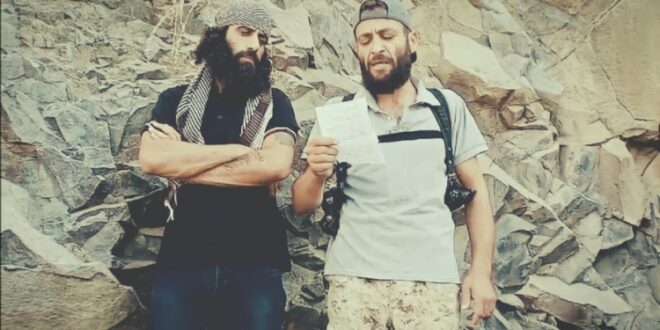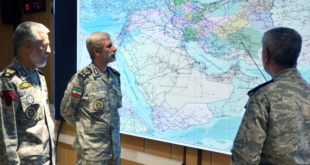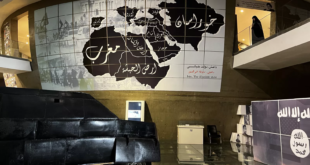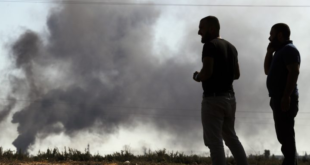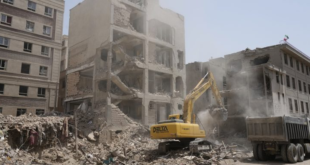Introduction
In June 2021, southern Syria once again dominated the headlines when the regime laid siege to the Daraa al-Balad area of Daraa city. A few days after the monthlong siege, an agreement to end the escalation collapsed and the Syrian army’s Fourth Division spearheaded a major military push in the area. Intense clashes broke out as groups of unreconciled rebels violently repelled the advancement of Syrian military forces. Armed confrontations spread into eastern and western Daraa amid heavy bombardment via missiles, artillery, and mortar shells, marking the deadliest and most intense fighting in Syria’s south-west since the conclusion of the 2018 “reconciliation” agreements.
Local and external actors expected Russia to intervene and mitigate hostilities. Such expectations were based on a record of rapid interventions, whereby Moscow had managed to resolve localized conflicts and prevented the eruption of large-scale armed clashes in Daraa over the past three years. In the case of Daraa al-Balad, however, Russia was slow to intervene and showed an extraordinary reluctance to end armed violence, broker serious negotiations, and enforce a final agreement. Despite the catastrophic humanitarian implications it has on the exhausted local population, this delay seems to be warranted.
Besides the rampant violence, prevailing lawlessness, and increasing criminal activities, all of which have become entrenched in Daraa since 2018, (1) recent developments in regional politics, (2) the regime’s insistence on bringing Daraa under firmer security control, (3) increasing Iranian influence, and (4) the infiltration into the Central Negotiations Committee (CNC), a local group whose members acted as the main interlocutors for Russia and regime officials to ensure the implementation of the 2018 agreement, by displaced active rebels and Syrian opposition figures are crucial factors that caught Russia’s attention and prompted it to rethink the order it has engineered in southern Syria in 2018.[1]
Russia’s anomalous approach in southern Syria in 2018
After its direct military intervention in Syria in late 2015, Russia combined unrestrained use of violence and negotiations to coerce rebel groups to surrender and enforce local “reconciliation” agreements, thereby allowing the Syrian regime to assert greater territorial control. Indeed, this approach compelled rebels to capitulate in areas in Syria’s western interior like Eastern Ghouta and in northern Homs, granting the regime absolute authority with no restrictions imposed on the presence of its military and security forces. However, in southern Syria, the fear of regional escalation required a different approach. To prevent violence from spilling over into neighboring countries, avoid large scale-displacements, and reassure neighbors that have long been worried about the Iranian presence in a border region, namely, Israel and Jordan, Russia adopted a different approach, which was intended to allow the regime to return yet prevent it from restoring absolute authority.
In June 2018, when the regime’s military forces were deployed to southern fronts and began to recover territory, Russia offered the rebels the opportunity to engage in negotiations. Based on the outcomes of the 2018 negotiations, dissolved rebel groups surrendered their arsenal of heavy weapons, individual former rebels were allowed to retain their light arms, and institutions reopened to resume providing essential services to the local population. Most importantly, the regime’s armed and security forces were prevented from having access or maintaining a presence; they were limited to sanctioned checkpoints on the outskirts of these “reconciliation” areas and junctions connecting them to national highways. The two processes of regime return neutralized southern Syria by August 2018. Nevertheless, the parallel yet disjointed implementation of these two processes have created zones where the presence of the regime’s military and security forces ranges from strong to non-existent. Put differently, while the regime’s use of armed force coerced rebels to surrender and allowed it to reassert itself, the Russian-led negotiations prevented a full restoration of regime authority and granted former rebels a potential role, mainly, in the cities of Busra al-Sham and Tafas, and their surrounding areas, and the area of Daraa al-Balad, which is the part of Daraa city that was under the rebel control.
Despite the significant disadvantages the agreement entailed, mainly related to the violence it generated and the harsh criticism it faced from recognized regime officials, Russia remained committed to its essence, namely, to limiting the regime’s authority in southern Syria. In addition to patrols of Russian Military Police, the Eighth Brigade, a sub-division of the Russian-backed Fifth Corps established in October 2018 and headquartered in the city of Busra al-Sham, has come to serve this purpose. Under the command of Ahmad al-Oda, a former rebel leader, the Eighth Brigade not only acted as an effective intermediary to defuse tensions that arose between the regime and collectives of unreconciled rebels (e.g., Tafas, Daraa, and al-Sanamayn), but also enjoyed a wide margin of maneuver to inflict small-scale, carefully monitored violence to limit the regime’s authority and to keep Iranian influence at bay. Faced with such restrictions, the regime and its Iranian ally remained dissatisfied. The continuous deployment of regime forces concomitant with localized processes of recruitment and covert expansion of Iranian-backed forces posed a constant threat to the model of regime return Russia has forged in parts of the south
The defining characteristics of post-war Daraa al-Balad
Daraa al-Balad, the old part of the provincial capital, is among the areas that had previously fallen to rebel organizations and were covered by the 2018 Russian-led negotiations. Since 2018, Daraa al-Balad has been represented by the CNC, an aggregation of civilian opposition figures, former rebel leaders, and local notables that acted as the main interlocutors of Russia and the regime officials to ensure the implementation of the 2018 agreement. Frequently, CNC members received civilians’ demands, for example regarding the fate of detainees, improvements to service delivery, and the overall worsening of security conditions and raised them with the Military and Security Committee of Southern Syria (MSCSS) and Russian military officers. However, despite the popular support some members enjoy, the lack of a genuine Russian patronage prevented the CNC from gaining bargaining power necessary to pressure the Syrian regime to respond to and fulfil its demands. As succinctly put by a civilian from Daraa al-Balad, “They [CNC members] can’t force the regime to respond to our demands, not even to those related to improving basic services.”
Because it was covered by the 2018 agreement, locals in Daraa al-Balad have exploited the regime’s tenuous security grip and took to the streets to manifest their opposition and call upon Russia to fulfil its commitments.
The most common demands among protesters are for the release of detainees, the easing of security measures, and the ousting of the so-called “Iranian militias,” in reference to Lebanese Hezbollah and other armed groups perceived as proxies of Iran. In addition, the rampant and increasing violence is yet another defining characteristics of Daraa al-Balad. Often perpetrated by unidentified actors, violent incidents such as kidnappings, assassinations, improvised explosive device (IED) attacks, and drive-by shootings have become increasingly common and have targeted civilian and military actors on all sides. According to first-hand data collected and verified by the author, between August 2018 and June 2021 around 9-10% of the total number of violent incidents in the governorate as a whole took place in Daraa al-Balad, making it the second most violent area after the city of Tafas.
The semi-autonomous status of Daraa al-Balad, the abundance of light arms, and the sheer number of unreconciled rebels have always alarmed the regime and made rising tensions and violent confrontations inevitable. Indeed, in November 2020, violent armed clashes erupted when groups of unreconciled rebels opened fire on personnel from the Iranian-leaning Fourth Division deployed to search the vicinity of Daraa al-Balad for wanted persons involved in assassinations, leading the regime to respond with excessive violence. In solidarity with Daraa al-Balad, protests, blockades of key roads, and sporadic armed attacks against military and security checkpoint were reported across Daraa. The rapid intervention made by Russia and the Eighth Brigade succeeded in resolving the conflict and pushed the Fourth Division to withdraw from the area.
To reduce the likelihood of renewed confrontations, Russia brokered a new deal between the CNC and the MSCSS in early December 2020. The new agreement was described as “inclusive” in that it involved all of the regime’s security apparatuses and authorized a military judge to rescind arrest warrants and grant draft evaders and defectors a protection against prosecution — that is, in the event that they reconcile their status and re-join their military units within six days. The new agreement has reportedly failed to attract a large number of takers, which kept the regime deeply concerned about the presence of rebellious pockets in the provincial capital.
The 2021 siege and military offensive on Daraa al-Balad
For many reasons, including an unwillingness to trigger escalations and possible armed confrontations prior to the May 2021 Syrian presidential election and the forthcoming routine changes in the military command of the First Corps, regime officials have temporarily postponed dealing with Daraa al-Balad. Soon after the conclusion of the presidential election, however, it once again came to the fore. On June 23, 2021, a newly appointed Russian officer, Assad Allah, demanded the CNC of Daraa al-Balad to surrender weapons including 200 AK-47s, 12 RPGs, and 20 machineguns, allow the regime to search the area and the surrounding farms, and erect checkpoints inside the neighborhood, all of which the CNC refused. On the next day, the regime imposed a tight siege on Daraa al-Balad, which resulted in the deterioration of the already dire humanitarian situation that 10,7000 families (55,000 individuals) have endured. While the area’s refusal to participate in Syria’s presidential election was seen as the trigger of the siege, its deeper, underlying causes have always been the provincial capital’s semi-autonomous nature and the presence of numerous unreconciled and lightly armed rebels.
Following a series of negotiations, on July 24, 2021, an agreement was reached between the CNC and the MSCSS. In return for lifting the siege and the reopening the roads between Daraa al-Balad and the other parts of the city, the CNC agreed to surrender light weapons, to allow the establishment of checkpoints to maintain security inside Daraa al-Balad, and to reconcile the status of wanted individuals and military defectors who refrained from doing so in 2018. The MSCSS, for its part, promised to dissolve a local militia affiliated with the Military Security Branch, which is led by a former rebel commander hailing from Daraa al-Balad, Mustafa al-Masalmeh.
Based on the agreement, the CNC began to surrender light weapons, and about 183 individuals, including 10 military defectors, have submitted applications to “reconcile” their status with the Syrian regime. Meanwhile, another version of the agreement bearing the signature of a CNC member was leaked to the public. The leaked agreement, which stipulated 10 terms, including full regime control, the handover of all light and medium weapons, and the legal prosecution of individuals involved in “inciting and irresponsible statements” on social media. While many locals who spoke to the author raised questions about the “transparency,” “credibility,” and “legitimacy” of the CNC, for many unreconciled rebels this was stark evidence of “betrayal.” Subsequently, many CNC members have lost great deal of power over the behavior of the unreconciled rebels in Daraa al-Balad, creating rifts and blocs that have further complicated the negotiations with the MSCSS and Russia.
On July 27, the agreement faltered as clashes erupted when unreconciled rebels opened fire on personnel from the Fourth Division and repelled their advance into Daraa al-Balad. The MSCSS and the CNC have both accused each other of breaching the agreement. On the one hand, the MSCSS accused the CNC of not surrendering all of the weapons and of violently resisting the entering military forces, as stated by the commander of Daraa’s police, Brig. Gen. Dirar Dandal, while on the other hand, the CNC blamed the MSCSS for establishing more than three checkpoints and bringing in additional forces affiliated with the Iranian- backed Fourth Division to the surrounding areas. In many ways, the MSCSS exploited the rifts among the CNC member and its shaken legitimacy to promote its position during the negotiations. In return for lifting the siege and ending the military offensive, the MSCSS increased its demands to include the establishment of additional military checkpoints in Daraa al-Balad and the displacement of unreconciled rebels, including two figures accused of having ties with the Islamic State, Mouayad al-Harfoush and Mohammed al-Masalmeh, all of which were rejected by the CNC.
On July 29, the Fourth Division spearheaded an offensive against Daraa al-Balad. Halted by several cease-fires and series of negotiations that have become locked in stalemates, the clashes that erupted between the regime forces and groups of unreconciled rebels in Daraa al-Balad have been the fiercest the province has witnessed since the regime neutralized the south-west in summer 2018. Far from a limited-scale lightning-quick assault, confrontations spilled over into western and eastern Daraa as local armed groups carried out counterattacks against regime military posts to gain leverage and ease pressure on Daraa al-Balad, seized weapons and ammunition, wrecked checkpoints, and claimed the responsibility for capturing dozens of soldiers. In addition to at least 20 civilian deaths, including those of women and children, as many as 24,000 people, including internally displaced persons and Palestinian refugees, have been reportedly displaced to Daraa city and its surrounding areas.
Russia, which was initially absent from the scene, perhaps so as not to get involved in negotiations that would result in displacements and contradict the objectives of a meeting on the return of Syrian refugees, found itself forced to broaden its intervention when tensions reached an alarming climax. On August 1, 2021, Russian officer Assad Allah held a meeting with the CNC and announced an open-ended cease-fire — that is, until finalizing talks with the leadership of the Russian forces in Damascus. While the CNC demanded the end of the military offensive and the replacement of the Fourth Division with that of the Russian-backed Eighth Brigade to maintain security, and although al-Masalmeh and al-Harfoush appeared in a video stating that they have left Daraa al-Balad, the MSCSS remains determined to recapture the area and impose full control. The MSCSS’s stance was reinforced by a short visit by the Syrian minister of defense, Brig. Gen. Ali Ayoub, to Daraa city to reaffirm the regime’s demands. On August 7, Russia replaced Assad Allah with a new officer who promised a delegation of clan sheikhs and local notables to stop the military offensive on Daraa al-Balad and reach a peaceful settlement.
Southern Syria from Russia’s standpoint
For the past three years, Russia has remained committed to the core of the 2018 agreement, namely, to intervening and limiting the regime’s presence in parts of the south. However, an array of domestic and regional factors has complicated the case of Daraa al-Balad and seem to have led Russia to rethink the status quo in southern Syria.
First, regional politics inevitably have an impact on Daraa’s local politics. While Russia’s anomalous approach in 2018 was mainly designed to correspond to regional understandings rather than local ones, significant changes in local politics in Israel and Jordan and renewed talks may lead to a new Russian approach in southern Syria. The results of the most recent Israeli parliamentary elections, which ended the 12-year tenure of Benjamin Netanyahu, an Israeli leader “favored by Putin,” and ushered in a new coalition government under Naftali Bennett — which allegedly lacks an effective communication strategy toward the Kremlin — together with an acknowledgment by Jordan’s King Abdullah II of the vital Russian role in Syria, the “longevity” of the regime, and the need to move “the dialogue forward in a coordinated way,” are two critical regional developments that Russia will consider when taking steps to either to modify, maintain, or change the established order in Daraa.
Second, for the Syrian regime, the recapture of Daraa al-Balad will increase the likelihood of triggering a domino effect. The increasing military deployments, regroupings, and sporadic attacks carried out by the Syrian army against other localities in Daraa (e.g., Nahta, Tafas, Jasim, Mzeireb) are indicative of the regime’s insistence not only on raiding Daraa al-Balad but also on repeating the process in other areas characterized by a tenuous security grip, an abundance of weapons, and signs of opposition.
Third, regardless of whether Russia choses to tacitly co-exist with Iran in the south for domestic and regional considerations, or whether its efforts and ability to contain Iranian expansion are futile and confined, Iran has been able to expand its presence in southern Syria since 2018. The fact that Iranian-backed groups are spearheading the offensive on Daraa al-Balad and have repeatedly violated the consecutive Russian-brokered cease-fires is indicative of Iran’s efforts to expand its presence and reassert its relevance to the game in southern Syria.
Finally, although many CNC members are indeed effective and honest interlocutors, entrenched disagreements, the presence of spoilers, and a growing problem of legitimacy undermine the CNC’s intermediary role. While the CNC has reportedly lost a great deal of its leverage over the behavior of unreconciled rebels, which makes its existence as an entity problematic rather than a necessity, Russia has detected channels established between a few CNC members and Syrian opposition officials and displaced active rebel figures, who operated to spoil the negotiations. Such problems of legitimacy and exposure to infiltration have contributed to decreasing the desire of the Eighth Brigade to play a greater role in the negotiations.
Looking ahead
Restoring pre-June 2021 configurations in Daraa al-Balad seems to be difficult, especially with a broader Iranian involvement in the military offensive. Even if it happens, it will be temporary. Given the regime’s insistence on quashing the remaining pockets of defiance, enforcing control of weapons, and making Daraa al-Balad an example for other “reconciliation” areas in Daraa, Russia may find its latitude to contain the regime and its Iranian ally quite limited. However, in order to avoid large-scale violent clashes and avert displacements, Russia may seek to revive and supervise the implementation of the initial agreement, which was concluded on July 24, 2021. This would, however, constitute a step towards the end of the 2018 agreement. Even if the case of Daraa al-Balad is resolved, other areas in western and eastern Daraa will, sooner rather than later, come under similar pressure by the regime to give in and make concessions. Russia seems to be aware of the need to upgrade and generalize the 2018 agreement in a way that correspond to changes in regional politics and meets the new realities in southern Syria.
The CNC’s weak bargaining power and problems of infiltration and internal fragmentation, alongside the area’s worsening humanitarian situation and an overall balance of power that favors the regime, are core factors that put the CNC in a critical position. In case Russia brokers a peaceful solution, the CNC members must unite around a set of objectives and better communicate with the local population in the future. The portrayal of the CNC as a weak actor may be true. However, constantly reducing it to a mere hopeless victim is false, deceptive, and misleading. If the CNC finds itself unable to achieve any structural and functional changes that take into consideration the dire conditions among the exhausted local populace, then its members must be considerate enough to allow the rise of a new interlocutor whose members enjoy robust ties with the population and other local actors.
 Eurasia Press & News
Eurasia Press & News
